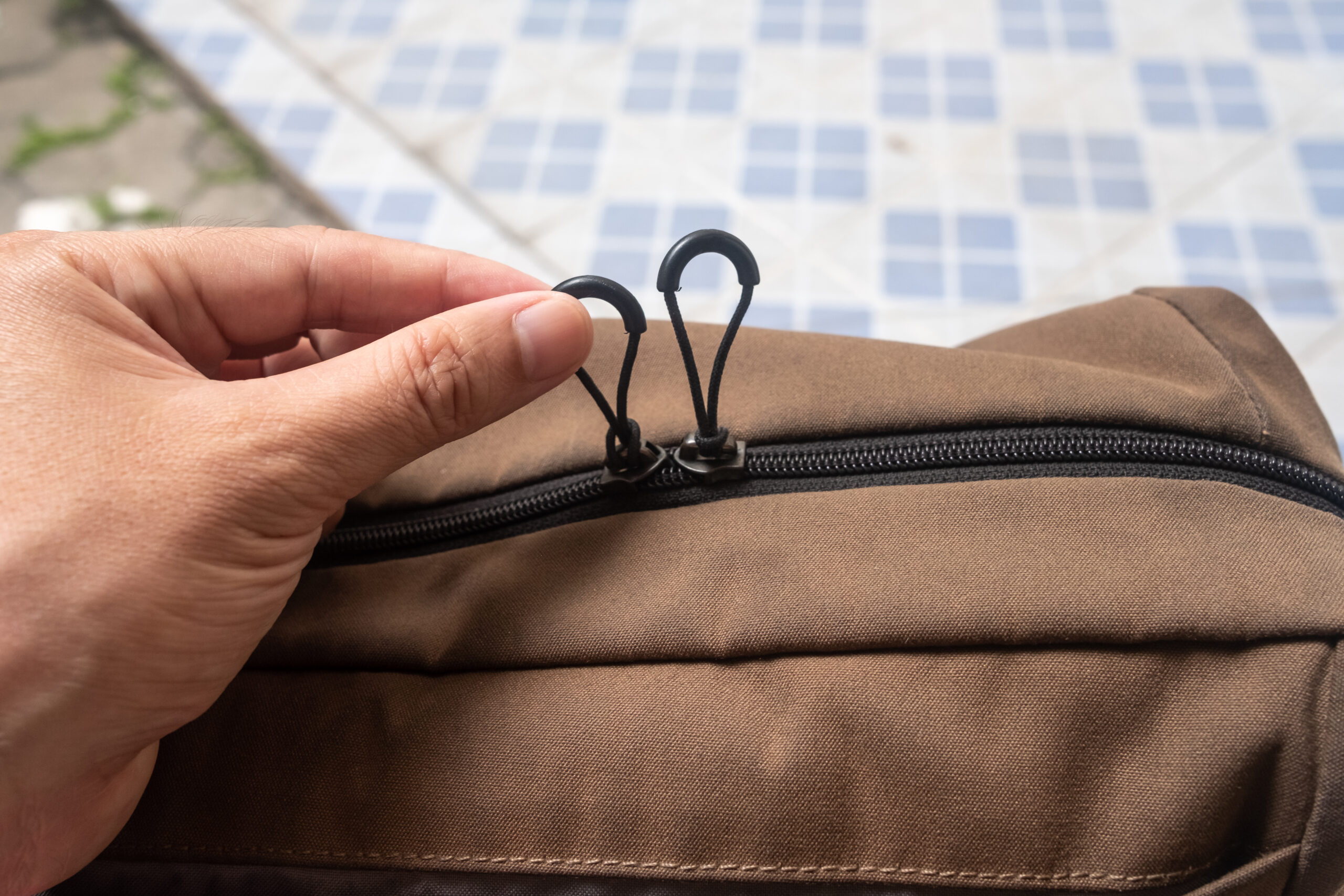For OEMs in industries where performance and safety matter, zipper reliability isn’t negotiable — it’s engineered, tested, and verified. A failed closure can mean a compromised marine cover, a broken containment seal, or a torn industrial enclosure. That’s why understanding zipper load testing is essential before any product moves into production.
Global zipper standards are governed by two primary systems: ASTM (American Society for Testing and Materials) and ISO (International Organization for Standardization). Both outline rigorous methods for testing zipper strength, fatigue, and corrosion. Knowing how these standards differ — and how to interpret their results — helps OEMs make data-driven sourcing decisions.
LenZip, a U.S.-based industrial zipper manufacturer, adheres to both ASTM and ISO testing protocols, ensuring every zipper performs consistently from prototype to production.
Why Zipper Load Testing Matters
A zipper is more than a sum of teeth, tape, and sliders — it’s a load-bearing mechanical system. Each component must handle tension, torsion, and wear without failure. If the zipper is underspecified, even the best textile or stitching can fail at its weakest point.
Load testing quantifies performance under stress. By measuring tensile, lateral, and fatigue strength, OEMs can predict how zippers will perform in real-world use. Testing also verifies that every production run meets a documented standard, not just visual quality checks.
For heavy-duty products — from marine enclosures to industrial protective covers — this data is the difference between reliability and premature field failure.

ASTM vs ISO: Two Paths to the Same Goal
Both ASTM and ISO are internationally recognized, but they differ in scope and measurement methodology.
ASTM focuses on testing materials and finished zippers through standardized lab procedures. The key reference, ASTM D2061, outlines methods for determining tensile strength, slider fatigue, and chain crosswise strength.
ISO standards, like ISO 22774, provide equivalent methods but often include broader environmental conditions, such as temperature and humidity variations. Many OEMs use both systems to ensure global compatibility.
LenZip’s Zipper Testing Standards reference both sets of protocols so engineers can interpret and compare data across international projects.
How Zipper Load Testing Works
In a tensile test, the zipper chain is clamped at both ends and pulled apart until it fails. The peak load at failure — measured in newtons (N) — defines its crosswise chain strength. For example, a #5 coil zipper might have a tensile rating of 350 N, while a #10 molded chain could exceed 700 N.
Fatigue tests simulate repeated opening and closing cycles. The zipper is run through thousands of operations to measure slider wear, tape fatigue, and tooth deformation. These results determine how long the zipper can perform before structural breakdown.
Corrosion and environmental tests, such as ASTM B117, expose zippers to salt spray for 24 to 96 hours to measure finish durability. A zipper’s coating or plating plays a crucial role here — poorly treated metal can oxidize quickly, especially in marine or industrial environments.
All of these measurements — tensile, fatigue, and corrosion — appear on LenZip’s spec sheets, giving OEMs full transparency into the performance profile of every zipper type.
Understanding Key Test Categories
Tensile and fatigue testing ensure a zipper will hold under load; environmental tests confirm it will last under stress. OEM buyers and engineers should understand how these categories are presented in a specification sheet.
Tensile Strength (ASTM D2061):
This measures how much pulling force a closed zipper can withstand before teeth separate or the chain breaks. The result indicates load capacity and defines whether the zipper is suitable for light, medium, or heavy-duty applications.
Fatigue or Cycle Life (ISO 22774):
Zippers are opened and closed repeatedly to test how sliders and chains handle friction. Fatigue failure can reveal weaknesses in slider design or tape bonding long before visible damage appears.
Lateral Strength (ASTM D2062):
This test measures resistance to sideways separation when the zipper is pulled apart horizontally — a key factor in luggage, upholstery, and tents.
Corrosion and Finish Testing (ASTM B117):
Metal zippers are exposed to salt fog to simulate marine or coastal use. High-grade coatings extend lifespan by preventing oxidation or pitting.
Inside Zipper Testing explains how LenZip conducts these tests using calibrated tensile and fatigue equipment for consistent, ISO-traceable results.
ASTM vs ISO: Test Comparison Overview
- ASTM Standards (U.S.-based): Define specific testing procedures for tensile, fatigue, and corrosion. ASTM D2061 is the most widely used standard for zipper strength. Results focus on mechanical properties such as maximum load (in newtons) and failure point under controlled conditions.
- ISO Standards (International): Broader scope including environmental exposure and dynamic testing. ISO 22774 and ISO 14880 evaluate both mechanical and environmental stress over multiple cycles. ISO reporting typically includes environmental variables such as temperature range and humidity percentage.
- Cross-Reference Testing: Many OEMs use both standards for global compliance. ASTM ensures mechanical consistency, while ISO validates performance in fluctuating conditions. Using both ensures a zipper’s durability worldwide.
How Load Testing Data Informs Design
Testing doesn’t just certify compliance — it feeds design intelligence. Engineers can use load data to adjust gauge selection, slider type, and tape material early in the development phase.
For example, if a #7 molded tooth zipper meets tensile but fails fatigue tests, switching to a coil chain with smoother tooth engagement can increase operational life without changing dimensions. Likewise, swapping an uncoated brass slider for a nickel-plated one may extend salt spray resistance.
OEM designers can review real testing data to make these trade-offs confidently. LenZip’s team frequently collaborates with customers to customize materials and finishes that exceed their performance requirements.

Material, Coating, and Environmental Interactions
A zipper’s strength is only as reliable as its weakest material layer. The chain, slider, and tape each respond differently to temperature, humidity, and chemical exposure.
For marine applications, for example, polyester or polypropylene tapes outperform nylon because they absorb less water and resist UV degradation. Meanwhile, a Teflon®-coated metal zipper may pass ASTM B117 salt spray tests twice as long as an uncoated one.
LenZip’s Zipper Coatings and Finishes outlines multiple coating systems tested for both ASTM B368 accelerated corrosion and ISO humidity chamber testing. OEMs can match these treatments to the end-use environment before selecting a chain material.
In environments involving chemical exposure, like laboratories or containment covers, polypropylene or PVC-coated tapes may be required. Testing ensures that every material combination maintains its rated tensile and fatigue performance over time.
Testing Equipment and Calibration
Modern zipper testing uses specialized machines that mimic real-world stress conditions. Tensile testers apply controlled pull rates until failure, while fatigue rigs cycle zippers thousands of times to replicate years of use.
LenZip’s in-house lab uses calibrated Instron tensile testing machines and precision fatigue testers maintained under ISO 17025 laboratory calibration standards. This ensures every reading — from crosswise load to slider pull strength — remains accurate and repeatable.
The company’s investment in testing allows OEM partners to view real data from production samples, not just generic lab summaries.
How OEMs Interpret Test Reports
A complete test report includes numerical data, environmental conditions, and pass/fail criteria. Engineers should focus on three details:
- Peak Load to Failure: Defines the zipper’s absolute tensile limit.
- Average Cycles to Fatigue: Determines operational lifespan.
- Failure Mode: Explains whether failure occurred at the slider, chain, or tape.
A zipper that maintains 95% of its rated load after 2,000 cycles is considered highly durable for industrial applications. OEMs should also look for coefficient of variation (COV) — a low COV indicates consistent quality.
By cross-referencing test data with the design environment, engineers can confirm whether a specific zipper type meets or exceeds required performance levels before mass production.
Integrating Test Data into Product Validation
OEM teams can use zipper load test data as part of their broader validation and compliance programs. Incorporating ASTM and ISO results into design verification files ensures transparency across the supply chain.
For instance, a marine upholstery OEM can reference ASTM B117 corrosion tests alongside tensile results to prove compliance for insurance or warranty programs. Similarly, a medical device fabricator can include fatigue data in documentation for FDA or ISO 13485 audits.
LenZip provides test certificates and dimensional drawings with every order, ensuring OEMs can integrate these directly into CAD files, quality manuals, or supplier records.
Quality Assurance and Repeatability
Testing is only as good as its consistency. Even a zipper that passes ASTM testing once isn’t guaranteed to perform the same in the next batch unless the process is controlled.
LenZip maintains repeatability through U.S.-based manufacturing and ISO 9001-certified process controls. Each lot is barcoded and tied to specific tensile and fatigue results, allowing traceability from the lab to final shipment.
This transparency is one of the main reasons many OEMs have shifted from offshore suppliers to domestic producers like LenZip. It ensures every zipper in every batch meets the same ASTM and ISO-tested quality level.
Learn More
Zipper testing is more than a formality — it’s the foundation of product reliability. Whether you’re designing for aerospace, marine, or industrial use, understanding how ASTM and ISO standards define zipper performance ensures every component meets your expectations.
As a U.S. zipper manufacturer, LenZip provides complete in-house testing and certification. From tensile strength verification to salt-spray corrosion testing, every closure is validated to the same documented standards used by top global OEMs.
Request a detailed test report or consultation at https://lenzip.com/request-a-quote/.
Frequently Asked Questions
- What’s the difference between ASTM and ISO zipper testing?
ASTM testing focuses on mechanical strength under controlled lab conditions, while ISO testing evaluates environmental and operational durability. Many OEMs use both for global coverage. - What is ASTM D2061?
ASTM D2061 is the primary tensile and fatigue test method for zippers. It defines procedures for measuring load-to-failure, slider endurance, and chain strength. - How does corrosion testing work?
Metal zippers are exposed to a salt-spray chamber following ASTM B117 standards to measure coating durability. LenZip’s coated zippers can withstand 96+ hours without corrosion. - Do plastic and metal zippers use the same test standards?
Yes, but results differ. Metal zippers typically achieve higher tensile strength, while molded plastic zippers excel in fatigue and environmental testing. - Can LenZip customize testing to my application?
Absolutely. LenZip performs ASTM, ISO, and MIL-SPEC testing in-house. OEMs can request custom pull rates, humidity exposure, or slider cycle tests via Request a Quote.
